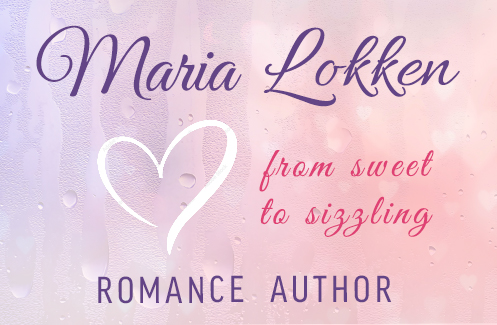There’s a controversy brewing over a new Young Adult book about to be released in the US entitled “Liar.” The book, written by Australian author Justine Larbalestier is about a black teenager named Micah. However, the cover art, beautiful as it is, is of a white girl with long straight hair. The cover art bears no resemblance to the story at all. While ‘investigating’ this controversy – I wondered if we’re cultivating racism in the way we sell and market books?
The author states in her blog, I never wanted a girl’s face on the cover. Micah’s identity is unstable. She spends the book telling different version of herself. I wanted readers to be free to imagine her as they wanted.
But the art department at Bloomsbury obviously felt differently when they created the US cover. The author explains their reasoning:
The US Liar cover went through many different versions. An early one, which I loved, had the word Liar written in human hair. Sales & Marketing did not think it would sell. Bloomsbury has had a lot of success with photos of girls on their covers and that’s what they wanted. Although not all of the early girl face covers were white, none showed girls who looked remotely like Micah.
I strongly objected to all of them. I lost.
Every year at every publishing house, intentionally and unintentionally, there are white-washed covers. Since I’ve told publishing friends how upset I am with my Liar cover, I have been hearing anecdotes from every single house about how hard it is to push through covers with people of colour on them. Editors have told me that their sales departments say black covers don’t sell. Sales reps have told me that many of their accounts won’t take books with black covers. Booksellers have told me that they can’t give away YAs with black covers. Authors have told me that their books with black covers are frequently not shelved in the same part of the library as other YA—they’re exiled to the Urban Fiction section—and many bookshops simply don’t stock them at all. How welcome is a black teen going to feel in the YA section when all the covers are white? Why would she pick up Liar when it has a cover that so explicitly excludes her?
 The book’s Australian cover just contains words. No misrepresentation there.
The book’s Australian cover just contains words. No misrepresentation there.
Certainly the YA genre has exploded – and there’s no doubt there are many, many more books for a young teenager to read then when I was in school. But I put forth the question – are we teaching to segregate from an early age? While people of color read books that feature ‘white’ characters all the time, do ‘white people’ read books that feature multi-cultural characters? It would seem to me, that the publishers don’t think so, why else categorize them so specifically? While publishers are improving in their selections of what they offer African American and Latino young readers, why make the distinction. To me, it’s blatant racism. It’s saying we’re writing books that only represent you and these are the books only ‘your kind’ will read. As a Latina – I read them all, and I am transported by a book regardless of the color of the characters in them.
In ““Myths of Teenage Readers” written in 2000 Marc Aronson he states:
Not very long ago, I would come to the editorial meetings in which new book acquisitions were approved by the higherups and marketing management. There I would hear: “blacks don’t buy books.” This was astonishing. Important people running large companies were living in a myth-suffused haze in which prejudice defined perception. Hearing something like that stops you in your tracks. It is so far from reality, yet it is expressed with complete authority. And these beliefs matter”
It would appear that Bloomsbury hasn’t really changed their views in the 9 years since Mr. Aronson’s book was published.
In a 2008 PW article, Andrea Pinkney, v-p and executive editor at Scholastic was quoted as saying: “We want teens to look at the jacket and say, ‘Yes, that is me,’
Yes, people want to know they’re represented in the world. But when I buy a book, it’s based on the story – does the story speak to me, is there something in this story that I want to know more about, will the story transport me to a place I want to go, or never dreamed of. When I choose a book I want to learn something new, or be inspired, or think about the world or people in a way I hadn’t thought of before. And sometimes I buy a book because an author’s language and pacing is so remarkable, I’m in awe. Do I buy a book because the characters represent me? Hardly ever. In looking over the list of books I’ve read in the last year, not one of them represented me, and yet I enjoyed many of them.
So I ask, are we teaching racism at an early age? Why do we segregate books? Why don’t white readers cross over as often as multi-cultural readers? And why do publishers and booksellers still insist that a black face or a Latino face or an Asian face or any face that isn’t white won’t appeal to white readers? Why not say, this year, there will be no differentiation, we’re just selling books, and they’ll be on the shelf alphabetically by author and in the sub-genre of YA, or romance, or mystery or whatever. In my opinion, let’s start early – no lines, just young adults, who want to read stories about being a teenager and about finding out how other teenagers live – their struggles, their triumphs, their hopes and their dreams.




I agree with you entirely. The trouble is, on the face of it, with the publishing industry itself. They have created such a high cost, high volume industry that we are now at the stage where you might almost write and even get published a book on fishing, but they are likely to put a naked girl (probably white) on the front in order to have a hope of selling more than a few copies.
However, the fact is that, whatever the marketing guys feel they need to do, you don’t have a lot of choice but to accept it, or you won’t get published at all. It’s all very well doing the “decent” thing, but if your book remains solely on your computer, then it doesn’t mean a whole lot, does it?
Most of us wish it was different (well the decent people amongst us do), but it isn’t and it’s life, the education system and just people that are wrong, I guess. In the end, though, much as I don’t exactly love the mainstream publishing industry, I can’t find it in my heart to seriously blame them for doing what bitter experience has taught them works, or they’d be out of a job too.